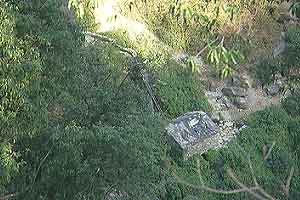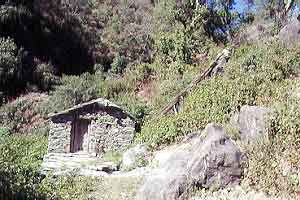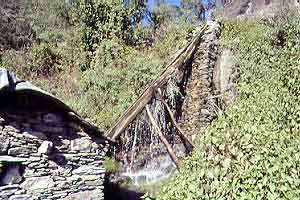Path: Introduction -
Visit the mills; catalogue - Gharats in India

Mills in Alto Aragón
Village mills in India

The same type
of small watermills like the ones of Ainielle,
Paúles, Aso de Sobremonte
and many more are still very much alive in several parts of the world. There are believed
to exist a few hunderd thousand of such mills in the Himalayas. The examples shown
are from the Indian Himalayas in the Nainital region (Uttar Pradesh). The watermills
there are called gharats and have many things in common with the
mills in Altoaragón.
Pictures: XII.2004





